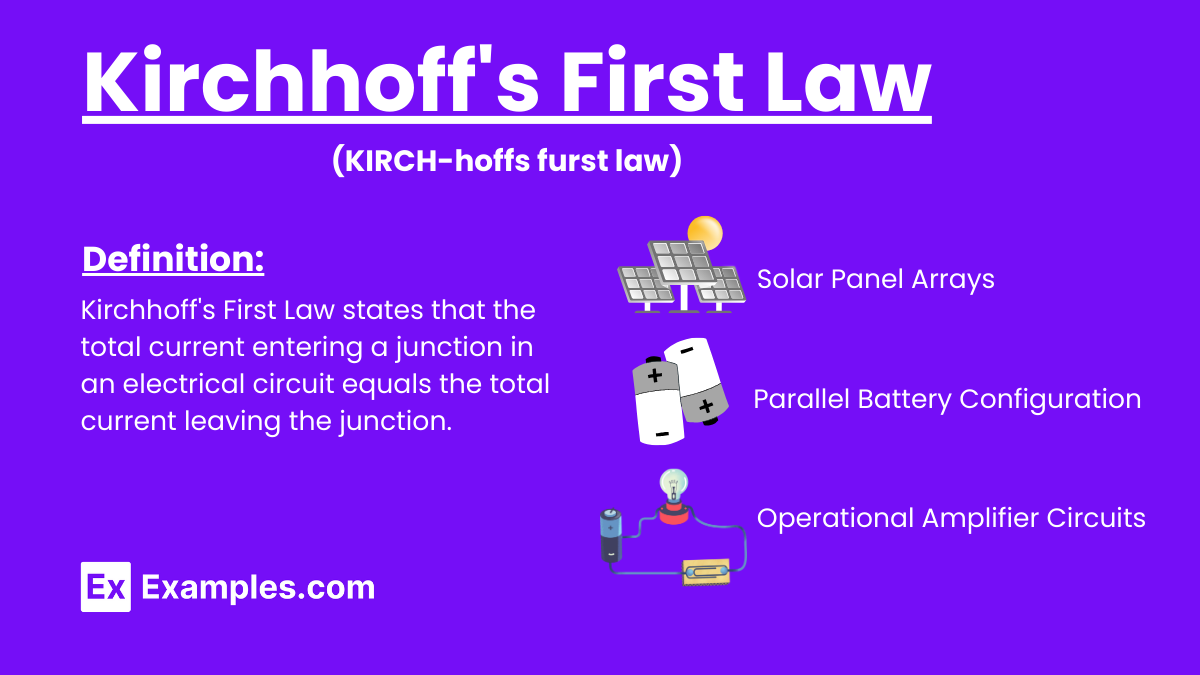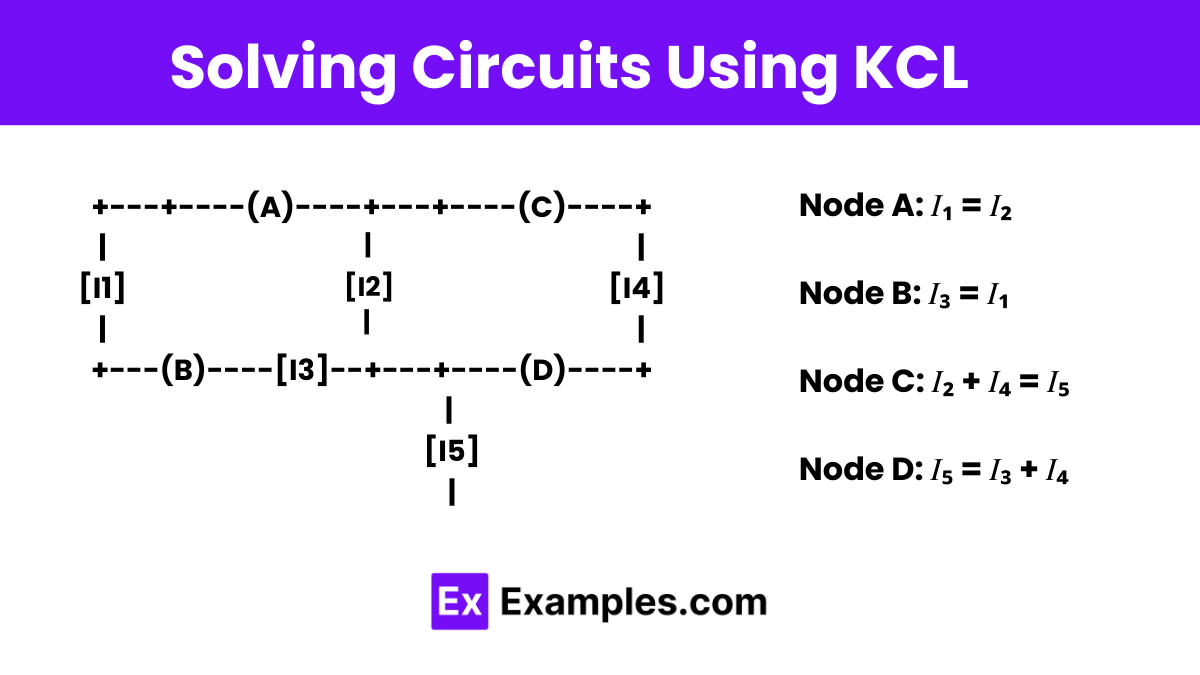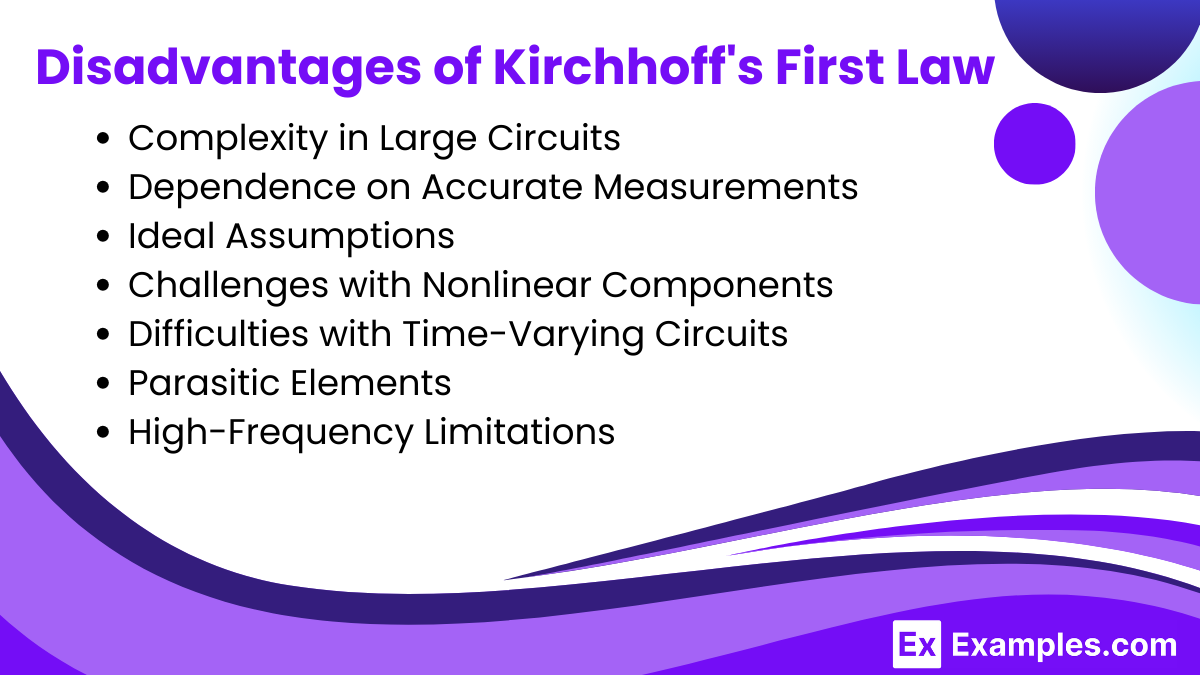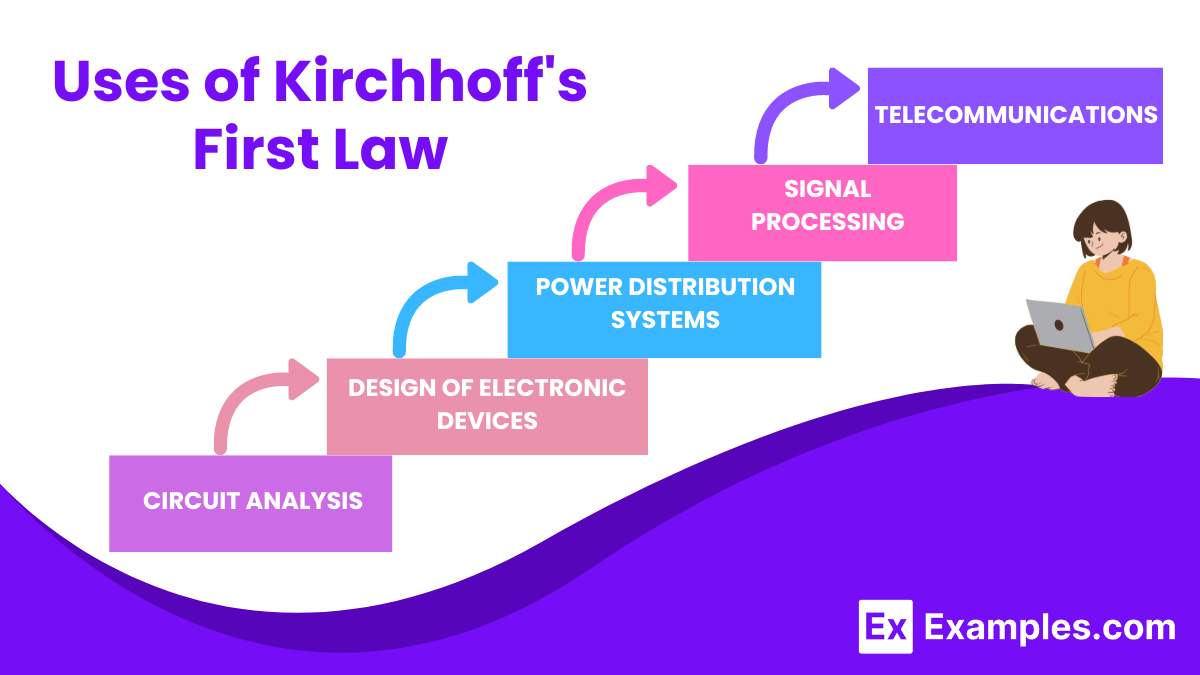What does Kirchhoff's First Law state about electric current at a junction?
The sum of the currents entering a junction equals the sum of the currents leaving the junction.
The total current entering a junction is always zero.
The sum of the voltages at a junction equals zero.
The total current at a junction is proportional to the resistance of the circuit.







